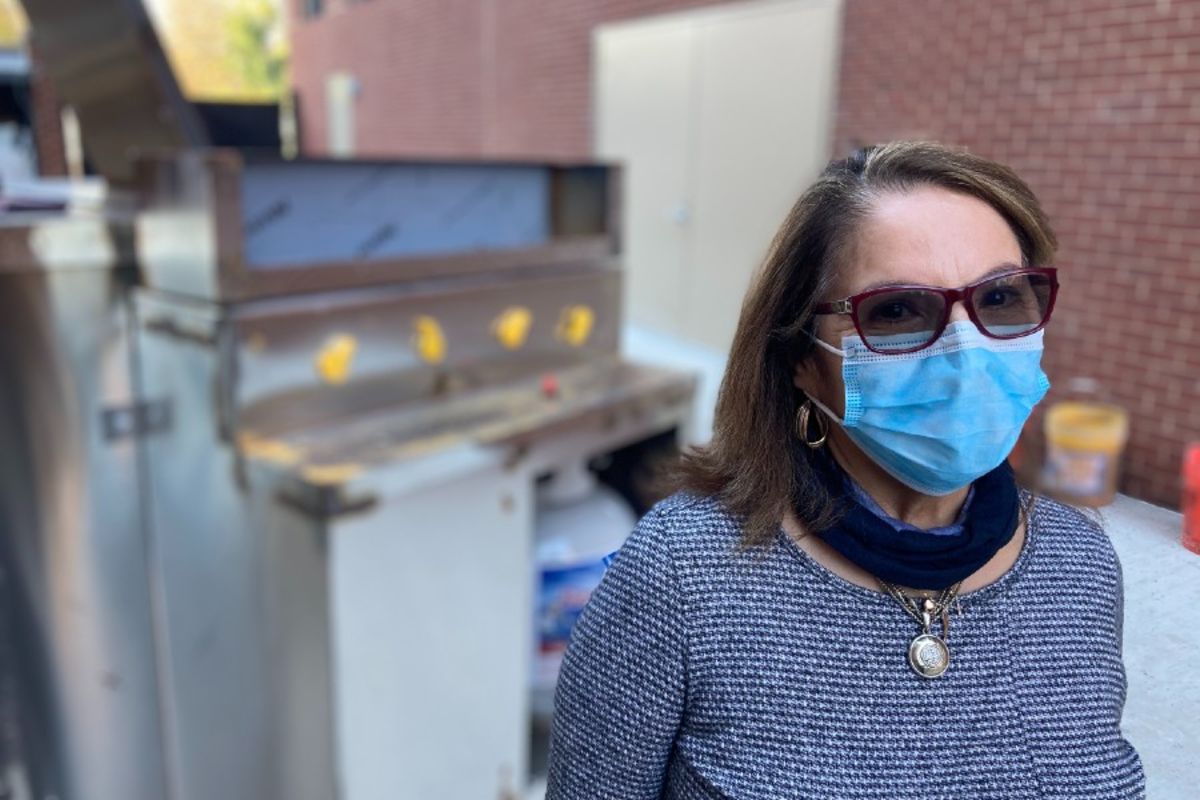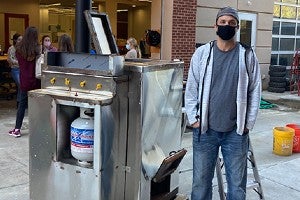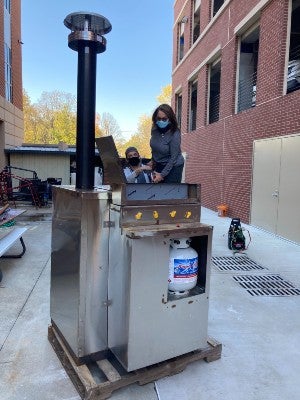Seniors design medical waste incinerator for use in Honduras
The prototype bio-incinerator, a project of the Peugeot Center, is an answer to prayer, says Predisan CEO.

Dr. Amanda Madrid, CEO of Predisan Health Ministries, saw the bio-incinerator demonstrated in November.
By Shelby Bratcher
December engineering graduate Nathan Klemz capped off his mechanical engineering studies at Lipscomb by unveiling a prototype bio-incinerator to Predisan Health Ministry, a nonprofit health care organization operating in Honduras.
The replicable bio-incinerator, designed by a team of student engineers led by Klemz, will serve as a safer, healthier way to dispose of medical waste in a Honduran health clinic.
Developed over the past year and a half through a partnership between Predisan and the college’s Peugeot Center for Engineering Service in Developing Communities, the bio-incinerator was demonstrated for Dr. Amanda Madrid, CEO of Predisan Health Ministries, on campus this past November.
“This will be an answer to prayer all over the country. We have searched everywhere to purchase something affordable, but anything we found on the market is too high tech to maintain in most of our locations, especially the hard to reach areas we serve,” said Madrid.
Many health care facilities in developing areas use open burn pits to destroy hazardous waste. Although this method does destroy some of the materials, a lot of the remaining waste could harm the environment, community members and wildlife surrounding these facilities.
Presdian entrusted the students with three important parameters when it came to the incinerator: to be portable, cost-efficient and a safer output to the environment in both waste and to the atmosphere.

Nathan Klemz with bio-incinerator designed by his team of students.
The low-cost incinerator is a three-chamber design that utilizes compressed liquid propane to properly dispose of harmful pathogens. According to initial testing, the design is able to handle about 175 pounds of toxic waste in eight hours of operation.
“I can honestly say that when this project started, I viewed it as an interesting design problem to consider, but now it is so much more than that,” said Klemz. “I have put in so many long days into this project and to be honest a bit of my heart and soul with it.
“Perhaps the most rewarding moment through this entire process was to see the CEO of Predisan, Amanda Madrid, visibly excited and see that true hope in her eyes at the possibilities and implications of using my design. The idea that something that I create would mean that much to a person, her community, and nation gives an overwhelming sense of purpose to the project.”
Steve Sherman, executive director of the Peugeot Center, hopes to move the incinerator to a rural clinic in Tennessee next month to collect more data and run more testing.

“This gives us the opportunity to operate it in the real world and gives our students more experience in analyzing data. If everything continues as planned, we will then send a team towards the end of summer to Honduras where they will fabricate the incinerator,” he said.
Since 2004, Lipscomb’s engineering college has been participating in mission work to make a difference in the lives of people in developing communities. Seven projects in nations such as Ghana, Guatemala, Honduras and Malawi were planned for 2020 but have now been slated for 2021.
Other students who worked on the bio-incinerator project during 2020 included: Sam Shaylor, Matthew Moore, Abdus Samad, Austin Eager, Daniel Etson, Payton Otto, Kenzie Cohn, Liana Tacconelli, Anna Bailey and Kate Owens.